All of the rationalists amongst us believe in Dream and Reality as two different realms of existence. Then there are the ones who believe that the two are complementary, we know them as Surrealists. Dreams and Reality being two sides of the same coin, that’s what Surrealism is. A major art movement of the modernist period, it tried to bridge the gap between the terms Dream and Reality, which had the contradiction between them unparalleled during those war times. By introducing quirky techniques to explore one’s creativity and to bring the subconscious into play, it sought after making people believe in the various outcomes of what was previously considered incapable of creating something other than the usual, unhindered human imagination.

Let’s look a bit deeper into how it came into *existence* itself.
Taking into account the post World War 1 scene, writers, thinkers and visual artists, most of them native to Paris, strongly believed that such a rationale way of thinking has left humans unsatisfied and incapable of imagining vivid situations. Put into simpler words, paying more than requisite attention to monetary activities and the drab society culture had left the human ability to imagine capable of way less than requisite. These beliefs of artists led to Dadaism, an anti-art movement essentially. Dadaists protests against prevalent art forms in form of anti-art gatherings, movements, writings and various visual mediums.
An element of irony could be found at the Dadaist Core, as it was using art to protest against art. Although in a form of mockery, it portrayed art as something which is destructive when it comes to affecting people’s imaginations and creativity because of its monotony. Because of which, it came out largely as a movement which seeks to eradicate existing forms of expression and hence could not gain much popularity amongst the general crowd.
The Surrealist Movement had its big break when after-Dadaism happened. Behind its motive, it still thought of conventional methods of expression, written and visual, as monotonous and as obstructions in creativity. What differentiated it from Dadaism was the approach it chose, which was largely creative. Instead of opposing the existing norms relative to arts, it sought after replacement, replacement with canvases that have enough room for unhindered creativity. What began as a literary and philosophical movement quickly spiraled into an art movement as well.
Surrealist paintings questioned the very norms of objectivity, with everyday objects presented in abstract shapes in natural or urban landscapes in vivid color. Surrealist paintings, as phrased by critics, were *literary*, implying that their agenda was set by theorists or litterateurs, and they were not rooted in proper pictorial concerns, but in theory and poetry.
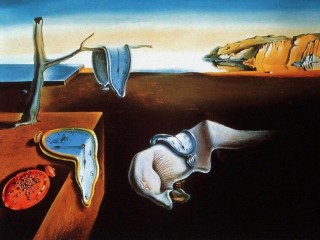
Bringing an all-together unexplored platform for creation, Surrealism attracted way more artists than Dadaism ever did. Surrealism presented specific art techniques, such as Automatism and Idiosyncrasy as ways to un-limit the capabilities of the human mind. At the same time, instead of trying to eradicate the existing art techniques completely, which was what Dadaism sought after, it urged people to try and perceive them differently. The lines along which they based what they were advocating being, “Ordinary and depictive expressions are vital and important, but that the sense of their arrangement must be open to the full range of imagination.” Surrealists were bent on finding ways to liberate imagination and worked on techniques such as Free Association of Objects, Dream Analysis and the Unconscious. Any technique that would free humans of mundane rationalism and monotony, however quirky or unusual, wasn’t left unspoken about by Surrealists.
The momentum this movement gained can be credited more to the artists associated with it, rather than the ideas. It is so because of a very simple fact: what the idea talked about, the artists presented in a tangible way, and hence, made it easier for people to understand what the theory was all about. More so, artists identified themselves being taken by single techniques and build the movement upon the same. Some of the biggest contributors were as discussed.
1. Andre Breton
Being one of the founding artists, Andre Breton worked closely with Louis Aragon and Philippe Soupault to explore the boundaries, if any, of Automatism, which is basically spontaneous writing without giving your words a second thought. Later, when the movement had gained much popularity amongst visual artists and writers, he introduced the idea of Juxtaposition, which is bringing unrelated elements together to create strong imagery.
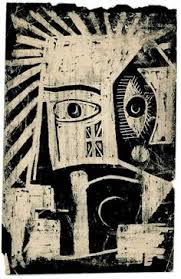
2. Salvador Dali
Whenever someone talks of Surrealism, Dali’s bound to be discussed. As the most widely known surreal artist of all times, he was a recognized painter, photographer, writer and a film maker of his time. He portrayed objects of daily and daily occurring phenomenon as something having not a single meaning but many, though some of them quite sceptical. Themes of Eroticism, Death and Decay rule his work.
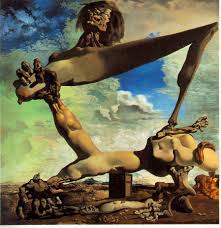
3. Man Ray
Being greatly skilled as a painter, photographer and film maker, Man Ray focused on fairly static themes inspired by Cubism and Expressionism. Referred to as the ‘practical dreamer’, he ventured into Surrealism and Dadaism much later, but excelled at it the same. He is best known for producing Rayogrammes, which were pictures produced on photographic paper without the use of a camera.
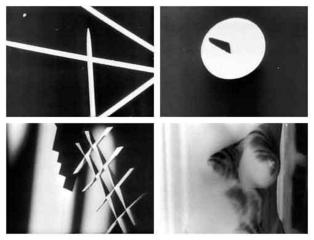
4. Rene Magritte
A famous Belgian artist, he was well known for his idiosyncratic approach to Surrealism. He used text in some of his images and was also appreciated for the provocative kitsch found in some of his later works. Repetition was also a common trait in his paintings and unlike other surreal artists, he preferred a deadpan, illustrative technique that accentuated his content.

5. Frida Kahlo
Frida’s work was imprinted with trauma, pain and themes with brooding and introspective subjects. Unlike many surrealists, more than dreams and subconscious, she relied on the stark reality of her life and her cultural/national identity for subject matter. Her paintings were sometimes categorized as visually disturbing, as most of them in most of she portrayed herself under emotionally painful situations.
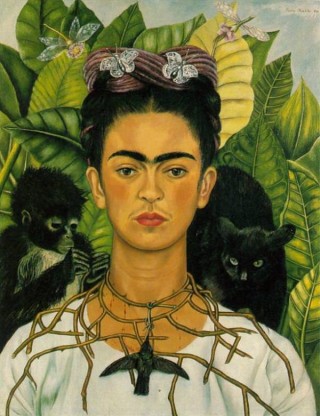
Surrealism expanded its base in Parisian cafes and public meeting places, where artists met to create content, both visual and written, and discuss ideas. Later, music, film and photographic techniques were added to the creative ideology. Surrealist writings and journals, being a part of the movement since the beginning, were now published with even greater fervor and engaged mass attention. In the 1930’s when the movement was recognizable even by commoners, visual artists presented their work in form of exhibitions in recognized galleries of Paris, Berlin and other major art centers of Europe.
Surrealism saw an unexpected and kind-of urgent welcome by people during this phase. As people began to relate better with the idea of individuality, they started understanding both the artworks and the movement better. People began viewing their quirkiness not as something which alienated them from the masses, but as something which made them stand apart and break the continuous monotony of their lives. The visual art of Surrealism was revolutionary in terms of its aesthetics, but wasn’t a Dadaist mockery of society or art, which added a lot to its acceptability.
Although there is no certainty to whether the movement has ended, or rather, would it ever end, World War 2 gave it a major halt. It not only proved to be the major problematic issue for surreal artists and creators, but created problems for all artists in general. The once highly centralized movement was disintegrated as artists fled to safer areas for residence. However, what did not disappear completely was the idea behind Surrealism: going after the unusual. The idea gained popularity again during the 1960’s, though without as much enthusiasm. Surreal painting techniques however, inspired many artists to explore their creativity and still continue to do so. Many major literary and art movements were affected by Surrealism even up till late 20th century.
The movement sought to empower the individual with his/her own creative capabilities and to bridge the gap between what the human mind considered rational and irrational, and it has very evidently achieved its purpose.
































